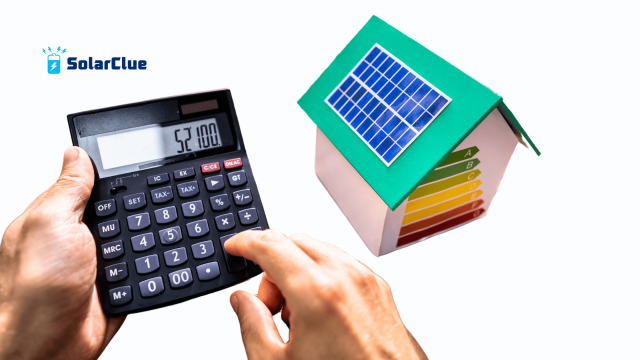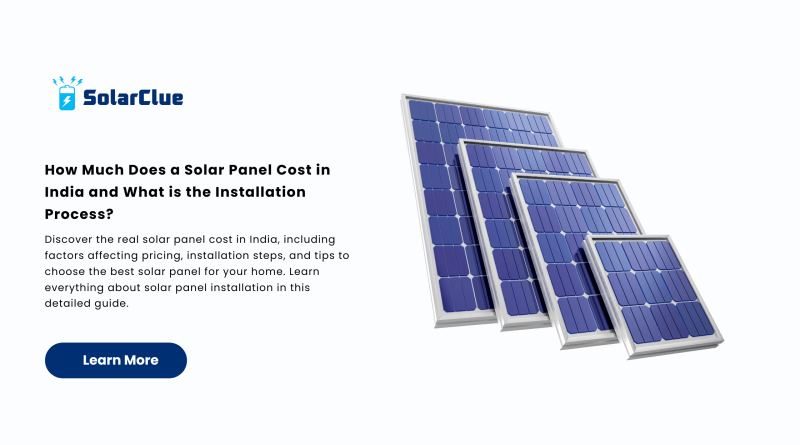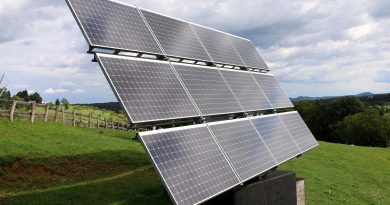How Much Does a Solar Panel Cost in India and What is the Installation Process?
With India embracing renewable energy like never before, more homeowners and businesses are turning to solar panel systems. But one of the most asked questions is: How much does a solar panel cost in India? In this article, we break down the pricing, benefits, and the solar panel installation process to help you make an informed decision.
Table of Contents
- 1 Understanding the Solar Panel Market in India
- 2 What is the Average Solar Panel Cost in India?
- 3 Factors Influencing Solar Panel Cost
- 4 Types of Solar Power Systems
- 5 Choosing the Best Solar Panel for Home Use
- 6 Solar Panel Installation: Step-by-Step Process
- 7 Maintenance Tips for Long-Term Efficiency
- 8 Is Solar Panel Installation Worth It?
- 9 Return on Investment & Break-even Point
- 10 Common Myths About Solar Panels
- 11 Eco-Friendly Benefits of Solar Power Systems
- 12 What to Ask Your Solar Vendor
- 13 Final Thoughts
- 14 FAQs
Understanding the Solar Panel Market in India
India is one of the fastest-growing solar energy markets. Falling prices, government subsidies, and increasing awareness have made solar power systems more accessible than ever.
What is the Average Solar Panel Cost in India?
The solar panel cost in India depends on several factors such as the type, capacity, brand, and whether you’re installing it for residential or commercial purposes.
1. Basic Cost Breakdown
- 1kW solar panel system: ₹60,000 – ₹75,000 (including installation)
- 2kW system: ₹1,20,000 – ₹1,40,000
- 3kW system: ₹1,80,000 – ₹2,10,000
- 5kW system: ₹2,70,000 – ₹3,40,000
Factors Influencing Solar Panel Cost

1. Type of Solar Panel
- Monocrystalline panels are more efficient but costlier.
- Polycrystalline panels are budget-friendly with moderate efficiency.
- Thin-film panels are cheaper but less efficient and need more space.
2. Brand and Warranty
Leading brands like Tata Power Solar, Loom Solar, Vikram Solar, and Adani Solar offer reliable and high-efficiency panels, influencing the solar panel cost.
3. Government Subsidies
The Indian government provides subsidies for solar panel for home installations under schemes like PM-KUSUM and the Grid-Connected Rooftop Scheme. These can reduce costs by up to 40%.
Types of Solar Power Systems
1. On-Grid Systems
Best for urban homes with stable electricity. Surplus power is exported to the grid.
2. Off-Grid Systems
Suitable for remote areas. Requires battery storage, increasing the solar panel cost.
3. Hybrid Systems
A combination of both, allowing flexibility and backup during power outages.
Choosing the Best Solar Panel for Home Use
To pick the best solar panel for your needs:
- Check efficiency ratings (above 18% is great)
- Look for panels with a 25-year performance warranty
- Consider installation space
- Compare quotes from different vendors
For more options, explore top panels at SolarClue.
Solar Panel Installation: Step-by-Step Process
Installing a solar power system involves several key steps:
Step 1: Site Assessment
A technician evaluates roof space, shading, and orientation.
Step 2: System Design
Based on energy needs, they design the system and calculate the required capacity.
Step 3: Approvals and Subsidy Applications
They help apply for net metering and government subsidies.
Step 4: Procurement and Mounting
Panels, inverters, batteries, and other hardware are sourced and mounted on your roof.
Step 5: Wiring and Connection
Electricians wire the system and connect it to your home’s power supply.
Step 6: Testing and Commissioning
The system is tested and handed over for daily usage.
For installation support, you can read more at blog.solarclue.com.
Maintenance Tips for Long-Term Efficiency
- Clean panels monthly to remove dust
- Schedule yearly inspections
- Monitor performance via solar tracking apps
- Check inverter and battery health regularly
Is Solar Panel Installation Worth It?
Absolutely. The ROI on a solar panel for home is impressive. With net metering, your electricity bill could drop by up to 90%.
Return on Investment & Break-even Point
Typically, a residential system pays for itself in 5-7 years, with 25+ years of performance. That’s two decades of near-free electricity.
Common Myths About Solar Panels
- “Solar panels don’t work during monsoon” – False, they still generate energy.
- “Too expensive to install” – With subsidies, solar panel cost in India is highly affordable.
- “Needs constant maintenance” – Very low maintenance required.
Eco-Friendly Benefits of Solar Power Systems
Using a solar power system reduces your carbon footprint, saves natural resources, and contributes to a greener planet.
What to Ask Your Solar Vendor
- What’s the total installed solar panel cost?
- Is the inverter brand reliable?
- Do you provide installation and after-sales service?
- Is net metering supported in my location?
Final Thoughts
Adopting solar energy is not just a smart economic decision; it’s a sustainable lifestyle choice. Understanding the solar panel cost in India and the installation process will prepare you for a smooth transition to clean energy.
For expert guidance and reliable solar products, visit www.solarclue.com or explore more at blog.solarclue.com.
FAQs
Q1. What is the average solar panel cost in India for home use?
The average solar panel cost in India for a 1kW system is around ₹60,000 to ₹75,000 including installation.
Q2. Which is the best solar panel brand in India?
Top brands include Tata Power Solar, Loom Solar, Vikram Solar, and Adani Solar.
Q3. Can I get subsidy on solar panel installation in India?
Yes, the government offers up to 40% subsidy on rooftop solar panel for home systems.
Q4. Is maintenance of solar panels difficult?
No, maintenance is minimal. Just keep panels clean and schedule annual inspections.
Q5. How long does a solar power system last?
Most solar power systems last 25-30 years with consistent performance.
Ready to make the switch? Start your solar journey today with the best solutions at SolarClue — because your home deserves the power of the sun!



